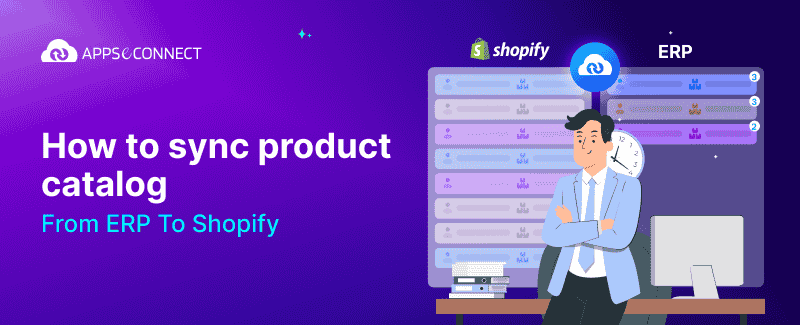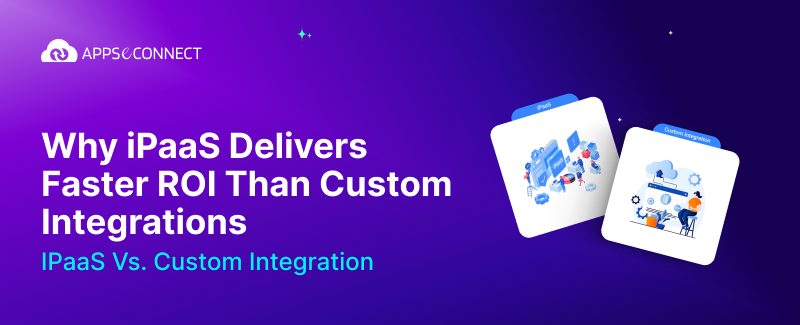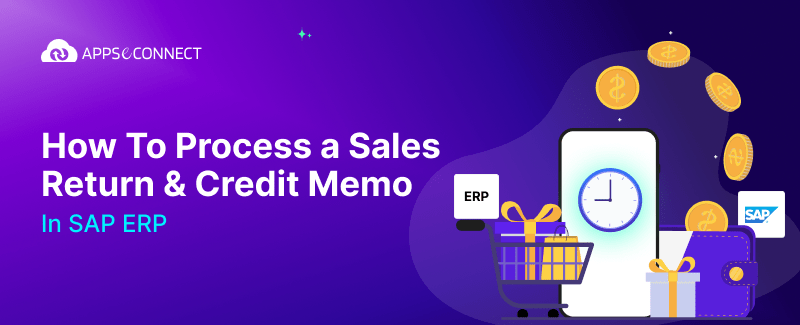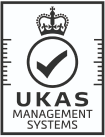Modern brands juggle orders, stock, suppliers, and channels daily. With ERP integration for eCommerce platforms, inventory stays honest, orders move cleanly, and finance sees one truth. This guide explains why modern ERP matters, essential features to prioritize, how integrations work, which vendors to consider, proven best practices, and how to navigate implementation challenges without slowing growth or confusing teams.
Why Modern ERP Is Essential For eCommerce & Supply Chain
It’s crucial as it becomes the operational backbone across stores, warehouses, and finance. It aligns product, pricing, orders, and stock, then feeds proof back to analytics. That alignment reduces errors, shortens cycle time, and lifts customer confidence.
When eCommerce ERP systems and Supply Chain ERP solutions act together, teams stop guessing. ERP for eCommerce becomes the daily source of truth, while fulfillment and suppliers stay coordinated. Strong Supply Chain management with ERP keeps replenishment timely and disruption risk lower.
- Unified Inventory: One record for stock across channels, locations, and reservations.
- Order Visibility: Track capture, allocation, and fulfillment with clear status changes.
- Supplier Collaboration: Confirm POs, ASNs, and receipts without email threads everywhere.
- Financial Accuracy: Post taxes, fees, and landed cost once, then reuse everywhere.
- Customer Experience: Promise dates, pricing, and stock align across all touchpoints.
- Scalability Path: Add stores, regions, and entities without rebuilding foundations.
- Compliance Ready: Trace users, changes, and flows with readable audit trails.
- Insights That Matter: KPIs reflect reality, not stitched spreadsheets from yesterday.
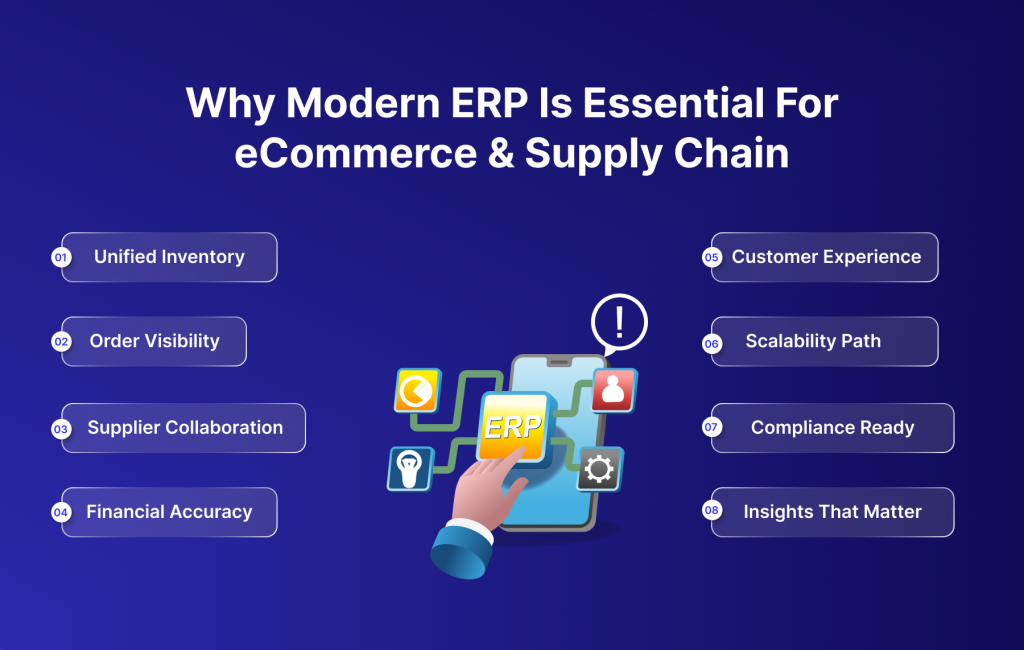
Features Of Modern ERP For eCommerce & Supply Chain
A capable platform must cover commerce and supply with equal depth. Below are key features of ERP for supply chain and eCommerce to evaluate. Use them as a shortlist while comparing eCommerce ERP systems and Supply Chain ERP solutions.
- Product Master: One catalog covers every product. Variants are native. Bundles and kits are first-class. Each item moves through clear lifecycle states.
- Inventory & ATP: An ERP system for inventory management keeps stock honest, buffers safe, locations aligned; promise dates remain reliable.
- Order Management: Orders are captured cleanly. Allocation follows transparent rules. Lines can split or merge when needed. Backorders are handled predictably.
- Pricing & Agreements: Tiered pricing is supported. Key accounts can have negotiated rates. Coupons apply correctly. Each promotion is tracked and verified.
- Procurement & Vendor: Purchase orders are simple to create. Supplier confirmations are recorded. Dropship flows run end to end, all with a self managed portal for the vendors.
- Warehouse & Fulfillment: All the pack and processes of packing run smoothly. Work can be grouped into waves. Labels print correctly. Carrier choice balances speed and cost.
- Returns & RMA: Returns follow clear dispositions. Refunds and exchanges are fast. Restock timing is controlled so items become sellable at the right moment.
- Financials & Costing: Customer invoices and supplier bills are managed in one place. Taxes are calculated correctly in each region. The landed cost rolls into the true cost of goods. Revenue recognition follows explicit rules.
- Production/Assembly: Direct-to-consumer makers can run light production. Bills of materials define each build. Material planning is straightforward. Work orders track progress.
- Forecast & Replenish: Demand patterns are learned from history. Reorder points and quantities are suggested. Planners get a focused workbench.
- Reporting & Alerts: Dashboards show what is happening. Reports are scheduled and delivered. Operators receive timely notifications.
- Compliance & Roles: Roles and permissions are modeled clearly. Sensitive actions require approvals. A detailed change history supports governance.
- APIs & Extensibility: Stable APIs power integrations. Online stores and marketplaces connect reliably. Warehouse systems and transport systems stay in sync. Third-party logistics partners fit in cleanly. Security is enforced throughout.
- Multi-Entity Scale: One system spans many companies and regions. Multiple currencies are supported. Local tax rules are respected.
Integration Capabilities With eCommerce Platforms & Supply Chain Tools
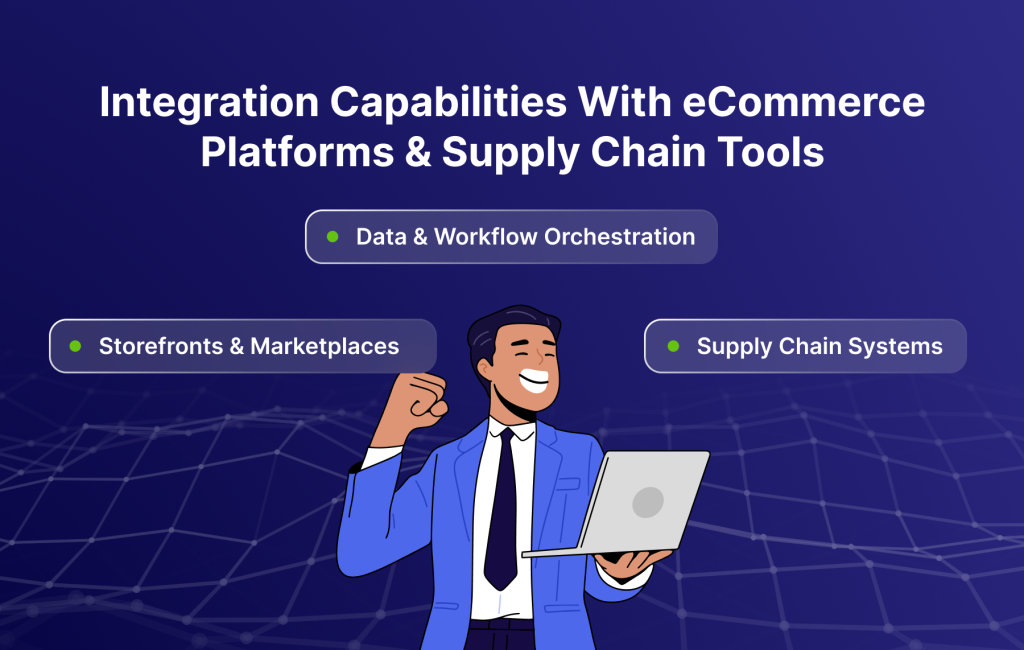
A solid ERP must speak fluent storefront, marketplace, warehouse, and carrier. A dependable integration layer prevents mismatches, protects margins, and shortens fulfillment cycles. This section explains integrating ERP with eCommerce platforms and supply systems without chaos.
Storefronts & Marketplaces
A storefront connection must carry orders, customers, products, prices, and stock. It should also return acknowledgments, cancellations, partial shipments, and refunds. Clean flows stop support tickets and maintain buyer trust.
Both ways help: Near-instant changes for transactions and scheduled checks for corrections. They keep product pages honest, carts correct, and order status visible across portals and emails.
- Order Intake: Bring orders with lines, addresses, notes, and taxes safely.
- Catalog Updates: Publish price and availability without lag during campaigns.
- Refunds & Returns: Reflect refunds and RMAs back to ERP consistently.
- Customer Profiles: Sync key attributes needed for pricing and service.
Supply Chain Systems
Warehouse and transport links keep picks, labels, and costs aligned. WMS covers picks, packing, and inventory moves. TMS returns rates, labels, tracking, and surcharges. EDI covers retailer requirements and shipment notices.
A good integration completes the loop: shipments update ERP with tracking, freight costs, and manifests. Inventory adjustments return promptly, so stock and GL remain accurate.
- WMS Handshake: Tasks, picks, pack, and inventory adjustments synchronized.
- TMS Exchange: Rates, labels, tracking, and final freight costs returned.
- 3PL Coordination: ASN timelines, receipts, cycle counts, and discrepancies managed.
- EDI With Retailers: Orders, ship notices, invoices, and compliance rules supported.
- Close The Loop: Post shipments and updates back to ERP every time.
Data & Workflow Orchestration
Orchestration decides how data travels and how failures recover. Good orchestration uses clear mappings, duplicate guards, and readable logs. These basics prevent silent errors and make operations feel calm.
Design patterns mix near-instant events with scheduled reconciliations. Teams get the best of both: responsive shopper experiences and dependable totals for finance.
- APIs & Hooks: Use stable endpoints and event triggers for key steps.
- Mapping Rules: Keep transformations consistent and documented for maintainers.
- Duplicate Guards: Prevent double posts during retries and cutovers.
- Observability: Show runs, errors, and owners in plain language always.
- Sandbox First: Test edge cases with current data before release.
Vendor Comparison — Leading ERP Solutions For eCommerce & Supply Chain
Choosing a platform means matching fit, depth, and growth plans. Use the quick table to skim, then the profiles for balanced context. This is comparing ERP systems for eCommerce and supply chain needs, not selecting on brand alone.
| Vendor | Best Fit | Commerce Strengths | Supply Strengths | Constraints |
|---|---|---|---|---|
| SAP S/4HANA | Enterprise | Complicated prices, multi-entity, worldwide reach | Planning depth, compliance, traceability | Higher program complexity and cost |
| Oracle NetSuite | Upper-SMB/Mid | Native order-to-cash, connectors, subscriptions | Multi-location, light WMS, finance depth | Customization boundaries, tiered licensing |
| Microsoft D365 Business Central | SMB–Mid | Familiar UI, extensions, partner ecosystem | Solid finance, add-on WMS/TMS options | Warehouse depth varies by add-on |
| Infor CloudSuite Industrial or SyteLine | Mid–Enterprise Makers | B2B commerce alignment, product configuration | MRP/APS, quality, multi-site | UI and depth vary by partner |
| Epicor Kinetic | Discrete Makers/Wholesale | Configurable flows, B2B order handling | Job scheduling, fulfillment balance | Program outcomes vary by implementer |
| Acumatica Cloud ERP | Midmarket | Modern APIs, commerce-ready modules | Inventory, warehouse, pricing/discounting | Scope carefully for advanced WMS/TMS |
| Odoo Enterprise | Cost-conscious | Quick start, modular apps, web store | Basic stock, purchasing, returns | Module depth varies; customization quality varies |
| Sage X3 | Midmarket | Distribution finance, global/tax features | Costing, lots/serials, multi-site | Frequently needs extensions for commerce |
SAP S/4HANA
For global brands, this ERP offers complex operations and strict controls. It centralizes finance, supply, and manufacturing while supporting multi-company structures. Suited to organizations with mature process governance.
Key features for commerce and supply: Advanced ATP, multi-entity controls, embedded analytics, and deep compliance. Rich inventory and fulfillment logic across regions. Strong traceability for regulated categories and large catalogs.
Pros
- Mature finance and supply functions for large, global organizations.
- Strong analytics and governance across entities and regions.
- Ecosystem breadth for integrations, extensions, and specialized needs.
- Suits complex pricing and multi-step fulfillment requirements.
Cons
- Higher program complexity and longer implementation timelines.
- Greater change management needs across many business units.
- Cost profile places it above many midmarket options.
- Requires disciplined master data and process ownership.
Oracle NetSuite
A cloud suite popular with commerce-first brands scaling into multi-location operations. It unifies orders, inventory, financials, and subscriptions within one environment. Favored by fast-growing midmarket teams.
Key features for commerce and supply: Order-to-cash coverage, item and location control, light warehouse, and subscription support. Many connectors to storefronts and marketplaces. Solid reporting for operational KPIs.
Pros
- Unified cloud platform with strong order management coverage.
- Many prebuilt commerce and marketplace integrations available.
- Clear dashboards and saved searches for daily operations.
- A strong option among best ERP solutions for small eCommerce businesses.
Cons
- Customization boundaries require careful design and governance.
- Licensing tiers can rise with users, entities, or modules.
- Advanced WMS/TMS often needs partner solutions.
- Complicated packs need more testing before going launching.
Microsoft Dynamics 365 Business Central
An SMB–midmarket ERP with a familiar UI and strong finance. It extends through AppSource and Power Platform. Flexible for wholesale and light manufacturing with commerce ties.
Key features for commerce and supply: Sales, purchasing, jobs, multicurrency, and inventory. Partner add-ons deepen warehouse and commerce functions. Integrates well with Microsoft productivity tools.
Pros
- Familiar experience lowers training effort for many teams.
- Large extension marketplace for targeted enhancements.
- Strong finance capabilities for growing organizations.
- Attractive total cost for many SMB–mid players.
Cons
- Warehouse depth often depends on add-ons and partners.
- Design variations across partners require careful selection.
- Complex omnichannel needs may stretch core features.
- Requires disciplined extension management over time.
Infor CloudSuite Industrial or SyteLine
For manufacturing-led commerce and wholesale services. It supports planning and production while handling distribution. Useful for product companies expanding direct channels.
Key features for commerce and supply: MRP/APS, BOM/routing, quality, multi-site coordination, and distribution workflows. Commerce alignment for B2B catalogs and customer portals. Good fit for make-to-order.
Pros
- Strong planning and manufacturing DNA for product companies.
- Quality and multi-site capabilities support regulated environments.
- Useful for B2B ordering and portal requirements.
- Solid distribution controls alongside production.
Cons
- UI experience and depth vary by implementer.
- Commerce extensions may need partner components.
- Longer ramp for non-manufacturing teams.
- Requires clear process mapping at start.
Epicor Kinetic
ERP for discrete manufacturing and wholesale distribution. Designed to balance shop floor and fulfillment. Fits configure-to-order and replenishment-driven businesses.
Key features for commerce and supply: Job scheduling, production management, inventory and fulfillment, and product configuration. Aligns with B2B order capture and customer service needs.
Pros
- Balanced production and distribution capabilities together.
- Configurable workflows for many discrete manufacturing models.
- Practical fit for B2B ordering and support.
- Good midmarket option with manufacturing focus.
Cons
- Outcomes vary significantly based on partner and approach.
- Commerce features may require additional components.
- Careful scoping for complex multi-entity structures.
- Training investment needed for advanced features.
Acumatica Cloud ERP
A flexible cloud ERP with modern APIs and commerce-ready modules. Attractive to midmarket brands seeking openness. Scales across distributors and D2C makers.
Key features for commerce and supply: Order, inventory, warehouse, pricing, and discounting. Strong integration patterns for storefronts and marketplaces. Usage-based licensing models appeal to some teams.
Pros
- Modern integration approach supports evolving commerce stacks.
- Licensing flexibility appeals to growth-stage companies.
- Good operational features for inventory and fulfillment.
- Healthy partner ecosystem for extensions.
Cons
- Advanced WMS/TMS requires careful scoping and partners.
- Complex B2B pricing may need targeted design.
- Governance needed to avoid customization sprawl.
- Reporting requires thoughtful model setup.
Odoo Enterprise
A modular suite with a wide app catalog, including eCommerce. Cost-effective for teams needing breadth. Suited to phased rollouts.
Key features for commerce and supply: Sales, purchase, inventory, website/store, accounting, and returns. Integrations and modules extend capabilities. Rapid proof-of-concepts are common.
Pros
- Fast to start with modular building blocks.
- Cost-effective path for growing businesses.
- Broad app ecosystem for common needs.
- Good for pilot-then-expand strategies.
Cons
- Module depth varies; some processes need custom work.
- Quality depends on partner and configuration choices.
- Scaling complex operations needs discipline.
- Governance essential to prevent fragmentation.
Sage X3
Midmarket ERP focused on distribution and process industries. Strong global features and costing. Serves multi-site organizations.
Key features for commerce and supply: Lots/serials, costing, finance, landed cost, and multisite coordination. Solid tax and global capabilities for expanding brands.
Pros
- Strong inventory and costing for distribution-heavy businesses.
- Useful global features for multi-country operations.
- Stable finance and tax capabilities.
- Practical for controlled growth plans.
Cons
- Commerce scenarios often need partner extensions.
- UI and workflows vary with implementer approach.
- Complex integrations require careful planning.
- Training investment for advanced functions.
Best Practices For ERP In eCommerce & Supply Chains
A few steady habits make the difference between noise and signal. Use this checklist to keep momentum during projects and peak seasons. These best practices for ERP in eCommerce and supply chains help operations stay predictable.
- Canonical Model: Normalize products, units, taxes, and locations before connecting.
- SKU Governance: Define naming, variants, kits, and lifecycle states consistently.
- Order Rules: Standardize allocation, partials, backorders, and substitutions centrally.
- Inventory Buffers: Set channel-specific safety stock and oversell guards clearly.
- Returns Policy: Encode reasons, disposition steps, and restock timing precisely.
- Shipping Logic: Centralize rates, surcharges, packaging, and final costs.
- Exception Playbooks: Alerts, retries, and ownership mapped to real teams.
- Sandbox First: Test campaigns, catalogs, and cutovers with current data.
- KPI Alignment: Agree on fill rate, OTIF, margin, stockouts, return rate.
- Change Windows: Schedule releases with rollbacks and verification steps.
Common Implementation Challenges
Even well‑planned programs hit snags. Below are challenges in ERP implementation for eCommerce and supply chain plus simple safeguards to recover quickly and protect teams. Treat each honestly, then resolve with clear ownership.
Data Model & Mapping Mismatch
Challenge: Product, price, tax, and location models may not align across systems. Misaligned codes or structures break sync, dashboards, and financial postings.
How to overcome: Freeze a canonical model early. Map and transform explicitly. Pilot a small catalog, compare results, then scale coverage with clear owners.
Inventory Accuracy & Timing
Challenge: Stock discrepancies cause oversells, split shipments, and missed promise dates. Delayed updates erode trust and raise costs during promotions.
How to overcome: Use quick updates for transactions. Run scheduled reconciliations nightly. Add channel buffers. Monitor variances and resolve root causes weekly.
Order Lifecycle Orchestration
Challenge: Multi-channel rules for holds, partials, and substitutions drift by team. Inconsistent outcomes confuse support and frustrate customers.
How to overcome: Encode rules centrally. Document scenarios. Add tests for each branch. Train operators on exceptions and publish a concise runbook.
Returns & Refunds (RMA)
Challenge: Messy dispositions, credits, and restock windows hurt margins. Unclear reasons create repetitive work and inconsistent outcomes.
How to overcome: Standardize reasons, quality checks, and timing. Automate credit logic. Track recovery rates and tune processes every quarter.
Supplier & 3PL Coordination
Challenge: Late ASNs, label mismatches, and surprise rates disrupt schedules. Poor communication multiplies delays and fees.
How to overcome: Adopt clear EDI/API standards. Test labels and rates early. Assign exception owners and track resolution time publicly.
Change Management & Adoption
Challenge: Teams revert to spreadsheets; processes drift off playbooks. Momentum fades after launch and shortcuts creep in.
How to overcome: Provide role-based training. Celebrate quick wins. Use usage dashboards. Hold short refresh sessions and rotate champions quarterly.
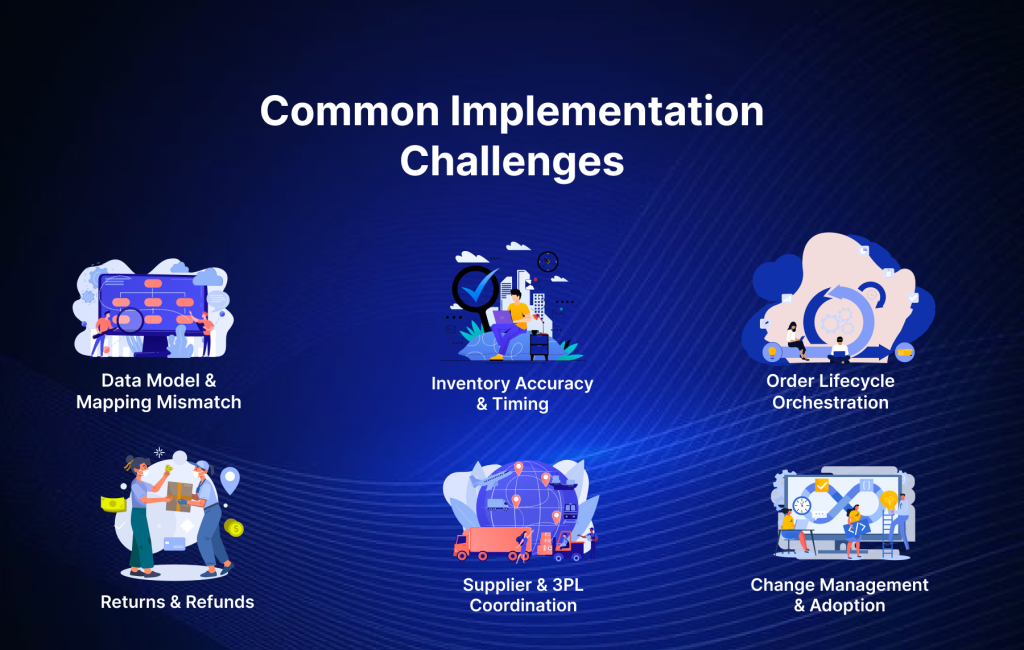
Conclusion
Modern ERP is the backbone that keeps products, orders, and numbers honest. With ERP integration for eCommerce platforms, brands publish accurate availability, orchestrate fulfillment smoothly, and post finance correctly—without heroic spreadsheets. Start with fit, run a focused pilot, align on KPIs, and expand deliberately. Use the best practices and safeguards above to stabilize operations, protect margins, and grow confidently across channels.
Frequently Asked Questions
Unified products, inventory accuracy, order flow control, procurement coordination, financial posting, analytics visibility, scalable entities, open integrations.
Use stable APIs, document mappings, guard duplicates, monitor runs, and test storefront, cart, checkout, refunds, and returns thoroughly.
Consider NetSuite, Acumatica, or Business Central—balanced coverage, manageable programs, partner ecosystems, commerce connectors, and growth paths.
It centralizes stock, respects reservations, updates movements promptly, reconciles counts nightly, and sends dependable availability to channels.
Data mapping mismatches, timing gaps, order rule drift, messy returns, partner coordination issues, training difficulties, and governance gaps.
Match business model, catalog complexity, warehouse depth, integration approach, ecosystem maturity, licensing design, and implementation partners.
Normalize data, govern SKUs, centralize rules, buffer inventory, standardize returns, sandbox changes, align KPIs, schedule controlled releases.







